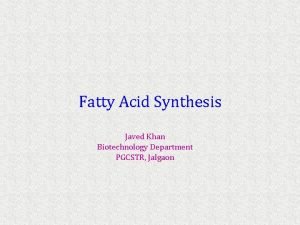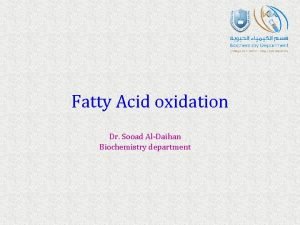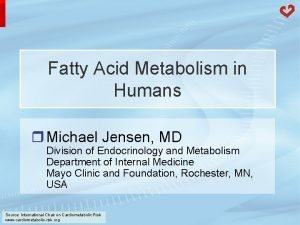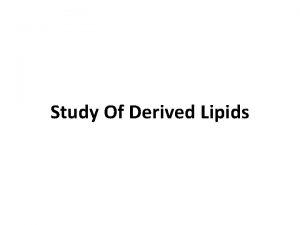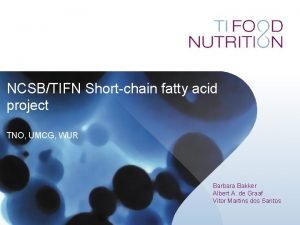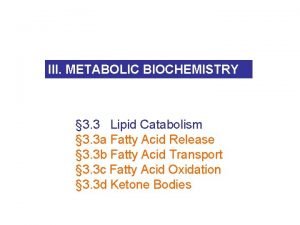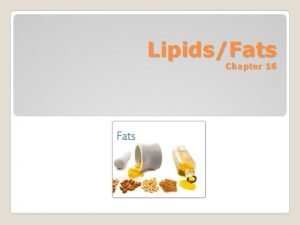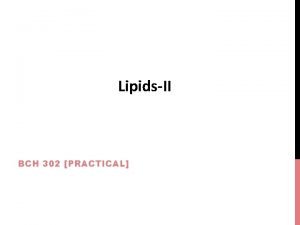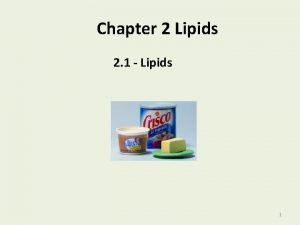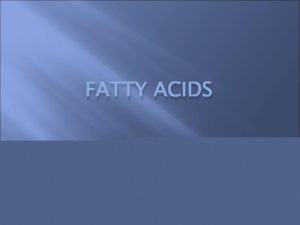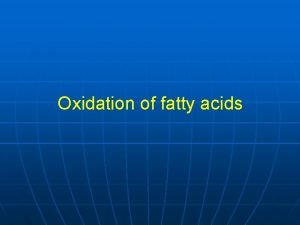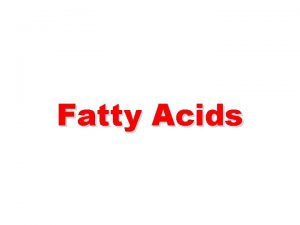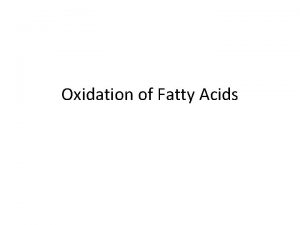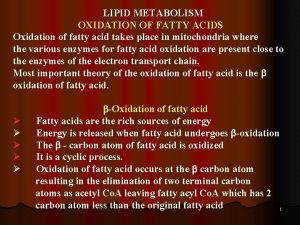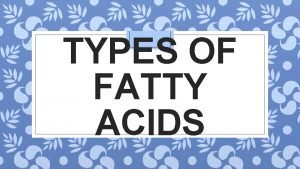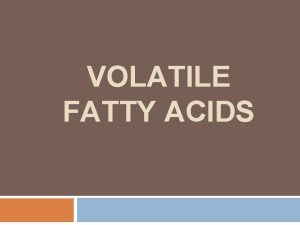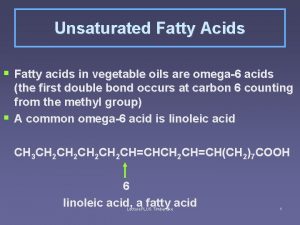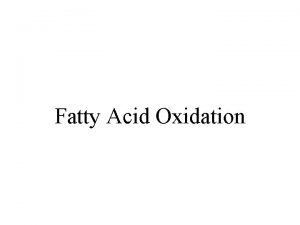LECTURE 4 Oxidation of fatty acids Regulation of












- Slides: 12

LECTURE 4 -Oxidation of fatty acids -Regulation of Lipid Breakdown - Ketogenesis and its regulation

β- oxidation in The Peroxisome Very long chain fatty acids (VLCFA) cannot enter the mitochondria- instead , they are oxidized partially in peroxisomes, then transported into mitochondria for further oxidation n No NADH is produced- only FADH 2 n Defects in peroxisomes lead to accumulation of VLCFA in blood and tissues , e. g. Zellweger (cerebrohepatorenal) syndrome, and X-linked adrenoleukodystrophy( suggest diet therapy) n

α-Oxidation of Fatty Acids A minor pathway n Useful for the partial oxidation of branched chain fatty acids n Lack of this pathway leads to Refsum’s disease( accumulation of phytanic acid in plasma and tissues) n Treatment involves dietary restriction to halt disease progression n

Phytanic Acid

Regulation of Lipid Breakdown n 1. 2. 3. This occurs at three levels: Control of lipolysis by phosphorylation and dephosphorylation of Hormone Sensitive Lipase Control of carnitine shuttle: malonyl Co. A inhibits carnitine- acyl transferase , therefore stop entry of acyl groups into mitochondria Control of β-oxidation: NADH & FADH 2 inhibit β- oxidation

Comparison of Fatty Acid Synthesis & Degradation

Ketone Bodies n n 1. 2. 3. Types : Acetoacetate- β OH butyrate, Acetone Location of synthesis: Liver mitochondria Location of utilization: mitochondria of all peripheral tissues, including the brain Reasons for importance: They are water soluble- need no carriers in blood They are produced in the liver when the amount of acetyl Co. A present exceeds its oxidative capacity Used by extrahepatic tissues in proportion to their blood level

Formation of Ketone Bodies. Ketogenesis: -Takes place at all times at low rate - Increases during fasting

Ketone bodies synthesis in liver and utilization in peripheral tissues

Regulation of Ketogenesis n - - In case of starvation, or excessive exercise, or uncontrolled diabetes: There is increased lipolysis leading to increased FFA influx to the liver FFA are oxidized to acetyl Co. A, and ATP increase while NAD+ and FAD decrease Gluconeogenesis is stimulated leading to use of OAA and decrease in its level available for TCA cycle. Therefore, TCA cycle is inhibited Acetyl Co. A concentration increase leading to increased ketogenesis

Regulation of Ketogenesis (continue) Therefore: n glucagon and epinephrine lead to increased ketogenesis n Insulin leads to increased glycolysis and decreased ketogenesis n

Excessive production of ketone bodies in diabetes mellitus- ketoacidosis n In uncontrolled diabetes ( specially type I) there is increased lipolysis , and ketogenesis, causing dehydration and acidosis
 Beta oxidation of fatty acids
Beta oxidation of fatty acids Beta oxidation
Beta oxidation Beta oxidation of odd chain fatty acids
Beta oxidation of odd chain fatty acids Fatty acid oxidation
Fatty acid oxidation Ester bond in fatty acids
Ester bond in fatty acids Nomenclature of saturated fatty acids
Nomenclature of saturated fatty acids Doc portal umcg
Doc portal umcg Saponifiable lipids example
Saponifiable lipids example Brain capillary
Brain capillary Classes of lipids
Classes of lipids Difference between saturated and unsaturated fatty acids
Difference between saturated and unsaturated fatty acids Bnh 302
Bnh 302 Triacylglycerols
Triacylglycerols
